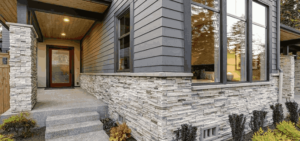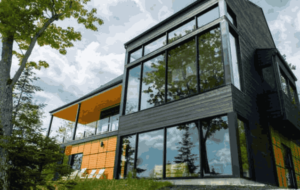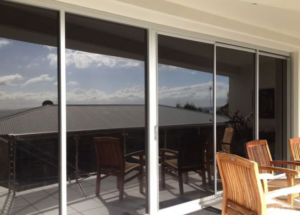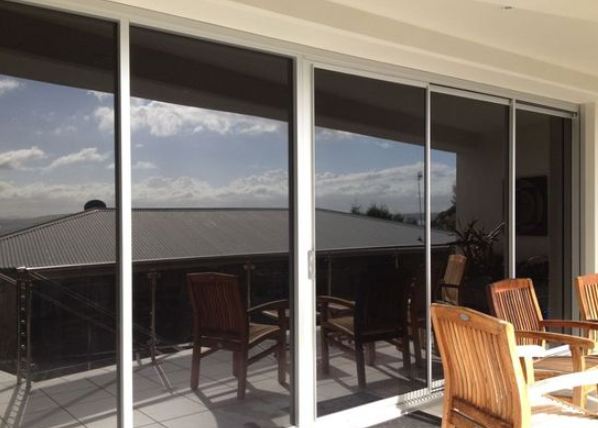The Benefits of Tint for Home Windows
When it comes to improving your home’s comfort and energy efficiency, tint for windows in homes can be a game-changer. The right tint can provide privacy, reduce solar heat gain, and enhance your home’s appearance while protecting you from harmful UV rays. Let’s explore various aspects of window tinting, keeping in mind some of the key considerations for choosing the perfect tint for your home.
Light vs. Dark Tints: Understanding Your Options
Choosing between lighter and darker tints can feel overwhelming, but it’s an essential decision that impacts both your home’s privacy and natural light. Lighter tints are ideal for those who want an open and airy atmosphere, allowing more brightness to enter while still offering UV protection and reducing glare. This option is particularly suitable for cooler climates or homes in regions with less intense sunlight.
On the other hand, darker tints are perfect for increasing privacy and minimizing light transmission, making them suitable for hot and sunny regions. These tints help keep indoor spaces cooler by rejecting more solar heat, effectively reducing your dependence on air conditioning. Whether you prefer a closed-off ambiance or an open feel, the balance between brightness and privacy plays a key role in the final decision.

Reflective vs. Non-Reflective Tints: Which One Is Right for You?
The choice between reflective and non-reflective tints depends on both aesthetic and functional needs. Reflective tints, often with a mirrored or metallic finish, offer exceptional privacy during the day by preventing outsiders from seeing in while maintaining clear views from inside. These tints can also reflect solar energy, helping to reduce indoor temperatures.
On the other hand, non-reflective tints, such as matte finishes, provide a more subtle and understated appearance. These are ideal for maintaining a cohesive look with your neighborhood’s architectural guidelines or for homeowners who prefer an aesthetic that doesn’t call too much attention to the glass. The choice often comes down to your preferences and how much you prioritize privacy, appearance, and solar heat reduction.
Enhancing Aesthetics with Window Tints
Homeowners often overlook the role of Tint for Home Windows in enhancing aesthetics. Tints are available in various colors, from neutral tones like gray and bronze to more vibrant hues like blue. Selecting the right tint can complement your home’s facade and interior decor, whether your style is modern, sleek, or traditional.
For a minimalistic or contemporary design, opt for tints with a cohesive finish that blends seamlessly with the architectural style of your home. Meanwhile, homes with a warm character or a more traditional look might benefit from tints that offer a bronze or neutral tone. This thoughtful approach to selecting tints ensures that your windows enhance the overall design and curb appeal.
Climate-Specific Considerations: Tailoring Tints to Your Environment
Your home’s climate significantly influences the type of window tint you should choose. For homes in colder regions, tints that support solar heat rejection while allowing some light transmission can help in maintaining a natural and passive heating process during winter. In contrast, homes in warmer climates benefit from tints that effectively reduce solar heat and keep the indoor environment cooler during hot seasons.
Seasonal changes also matter. A tint that balances energy efficiency across all seasons is ideal for homeowners who seek comfort without sacrificing cost efficiency. Understanding the unique properties of each tint can make all the difference in creating a space that’s comfortable year-round.

The Practical Benefits
Installing window tints in your home comes with numerous advantages. Energy efficiency is a standout benefit, as tints can help regulate indoor temperatures, reducing the need for constant heating or cooling. Additionally, tints provide UV protection, preventing your furniture from fading and safeguarding your skin from harmful exposure.
For families, tints add an extra layer of comfort by reducing glare on screens and surfaces. They also enhance security by strengthening the glass, minimizing the risk of injury in case of accidental breakage. Modern tints combine sleek appearance with privacy, ensuring that your home looks as good as it feels.
Types of Home Window Tints: Choosing the Best for Your Needs
- Homeowners have a variety of tint types to choose from, including dyed, carbon, ceramic, metalized, and hybrid options.
- Dyed tints are affordable and effective for reducing glare and sunlight exposure, but they may not last as long as other types.
- Carbon tints are durable and offer excellent UV ray blocking properties.
- For superior energy efficiency, ceramic tints are an excellent choice.
- They provide excellent heat rejection without affecting natural light.
- Metalized and hybrid tints combine durability with advanced solar heat control, offering a balance of functionality and aesthetics.
- When selecting the right tint, consider your budget, installation preferences.
- the specific benefits you prioritize, such as privacy or color options.
Enhancing Privacy and Security
Window tints are not just about looks; they also improve privacy and security. Frosted or matte tints, for instance, add a decorative touch while blocking visibility from outside. This makes them ideal for bathrooms or areas where enhanced protection and modern design are desired.
Additionally, tints act as a deterrent for potential intruders, as they make it harder to see inside. They also increase the resale value of your home by adding an extra layer of appeal and functionality. With the right tint, you can strike a balance between aesthetic appearance and safety.
Tinted windows are used for a number of reasons ranging from energy conservation to protection from the sun’s harmful rays.
BENEFITS OF INSTALLING TINTED WINDOWS
Following are some more benefits of installing tinted windows at your home.
- Temperature Control
- Cost-Efficiency
- Enhanced Security
- Privacy
- Protection Against UV Rays
- Minimise Glare
- Aesthetic Appeal
Professional vs. DIY Installation: What to Choose?
When it comes to installation, homeowners can choose between DIY and hiring a professional. DIY methods may save on cost, but they require skill, proper tools, and expertise to achieve a flawless finish. Incorrect adhesive techniques can lead to bubbles, reducing the tint’s effectiveness and visual appeal.
On the other hand, professional installation guarantees optimal performance and usually comes with a warranty for peace of mind. Professionals use advanced adhesives and shading techniques, ensuring your tints last longer and perform better. Whether you value precision, time, or budget, the decision ultimately depends on your preferences.

Maintenance Tips for Tinted Windows
Proper maintenance is key to preserving your Tint for Home Windows. Use a soft cloth or squeegee with a non-abrasive cleaning solution to prevent scratches. Avoid products containing ammonia, as they can damage the tint’s adhesive layer.
Regular care and attention to the glass surface will ensure optimal performance and durability. Look out for any signs of residue, scratches, or defects, and address them promptly to maintain the aesthetic and functional benefits of your window repair and tints.
Summary
Residential of Tint for Home Windows offers numerous benefits, including energy efficiency, enhanced privacy, UV protection, and a stylish look that boosts your home’s overall value. Choosing between a professional installation or a DIY window tinting approach requires understanding the care and maintenance requirements to maximize the film’s performance and longevity.
By exploring different types of window film and their specific advantages, you can transform your plain glass into a functional and visually appealing element of your home. Whether your goal is to save on energy bills, enhance interior comfort, or modernize your windows’ appearance, window tinting is an excellent option to achieve these objectives.
FAQs About Residential Window Tinting
- How long does window tint last on home windows?
High-quality window tints, when professionally installed, can last anywhere from 10 to 20 years. The lifespan depends on the type of film, exposure to sunlight, and maintenance practices.
- Does window tint affect indoor plants?
No, window tints typically filter harmful UV rays and reduce heat without blocking the light plants need for photosynthesis. In fact, they can protect plants from overheating and UV damage.
- Can window tint be removed or replaced?
Yes, window tint can be removed and replaced without damaging the glass. Professional removal ensures that no adhesive residue is left behind, and new films can be applied immediately.
- Do tinted windows make rooms too dark?
Not necessarily. The level of darkness depends on the type of film chosen. Many tints allow ample natural light to enter while reducing glare and heat, ensuring a well-lit interior.
Learn more about kitchen shelves



